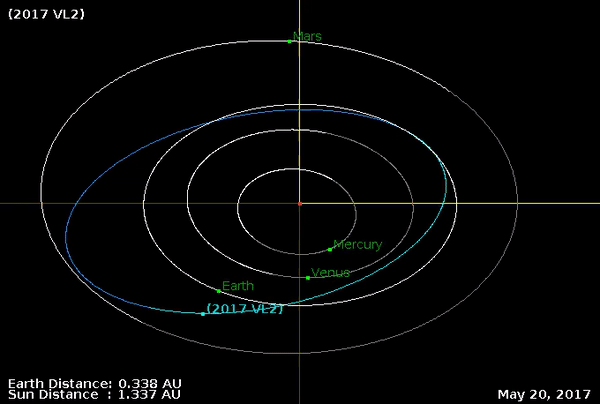There were so many earth-threatening asteroids in 2017 that NASA couldn’t even keep up.
Now, as we enter 2018, expect to see even more giant space stones. To prove it, an asteroid longer than the world’s tallest skyscraper is predicted to make a very close flyby of our planet on February 4th.
The asteroid will soar through our dark galaxy, passing earth at a distance of 2.6 million miles, which is stupid close in space terms. That’s only about ten moons away.
Named 2002 AJ129, the ‘potentially hazardous’ and giant celestial rock will whiz by earth at a whopping speed of 67,000 mph, according to BGR.
If that’s not enough to get you shook, the asteroid is a 0.7-mile wide boulder hurtling through space at a turbo speed 15 times faster than the world’s fastest aircraft.
Peep the logistics.

Let’s say the earth was to get hit by this asteroid the size of Burj Khalifa traveling 15 times faster than the hypersonic North American X-15 aircraft, what would happen? We would all freeze to boredom in a “mini ice age” following the asteroid’s impact.
Yeah, we would all turn into fucking popsicles, dying from an uninteresting, dark, and extremely brick world as soot would remain in our planet’s atmosphere for 10 years.
Imagine winter all year round with our days getting no warmer than 8° C (46 °F) for ten years, so sick. No bikinis, no pools, no getting sauced on the beach for a decade. Times would be very trash.
On the bright side of things, NASA is developing plans to prevent asteroid impacts. The Double Asteroid Redirection Test, aka DART, would strike life-threatening asteroids using a kinetic impactor technique shifting their orbits.
DART is aimed at altering the speed of a threatening asteroid by a small fraction of its total velocity. Even the little nudges count.
If we are able to strike an incoming asteroid well before the predicted impact, a small nudge will add up over time to a big shift of the asteroid’s path away from Earth.
Hopefully, the mission is a success as it is set to test with a small non-threatening asteroid in 2024. Check out the mission for yourself below.







